
I sat down and did a freehand of the Smartfind screen for the Explorer XS so that I could use it to illustrate certain features. It is not exactly to scale, but it is very close. Read through the following 6 screens to learn a little bit about discrimination patterns and how to determine your target ID by crosshair position and movement.
The first pic is the Smartfind
screen with an open discrimination pattern (all white) where all targets
are accepted. I pictured it with sensitivity set at manual - 22 where I
usually start out at, and illustrated the depth meter at about halfway
(where I tend to start digging the older coins). 
The next screen shows my usual
discrimination pattern I hunt in which is basically accepting everything
above iron. The notch-in towards the bottom allows a little extra sensitivity
to smaller gold jewelry. 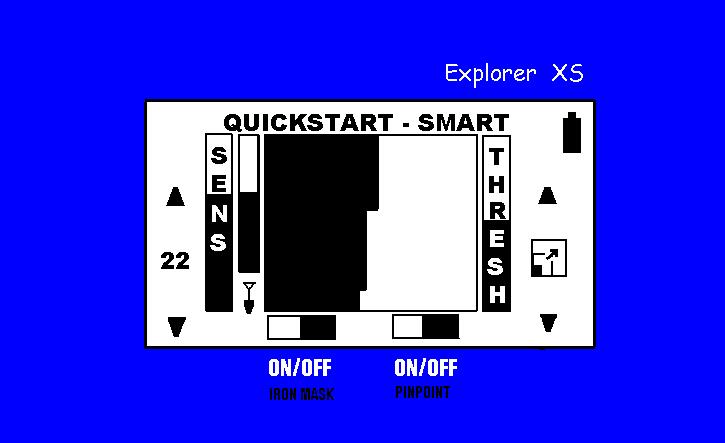
The next screen shows my typical
"coins-only" discrimination pattern. It accepts from indian cents/zinc
pennies on up and has a window at the bottom to accept nickels. 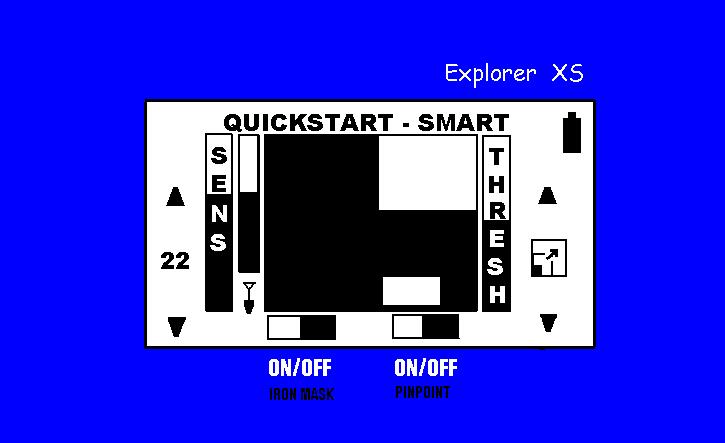
The third screen shows where
some typical targets will hit.......The red hit is silver quarter/half/dollar,
the green hit is silver dime, the blue hit is warnickel, the purple hit
at bottom is regular nickels. Notice how the silver dime/quarter/half/dollar
crosshairs almost always overlap top of screen - this is a good indicator
of silver. 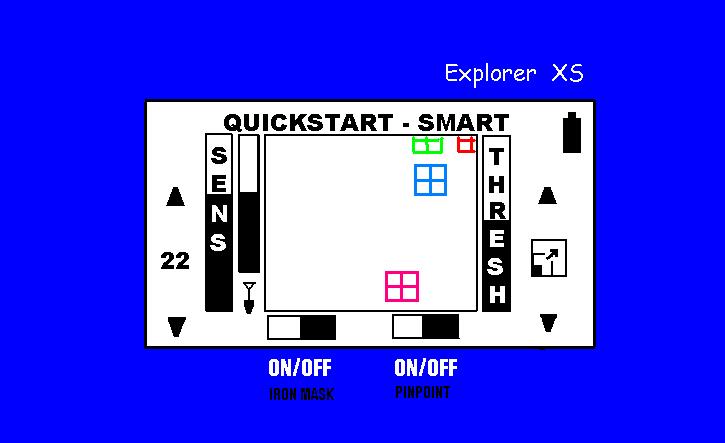
The next screen shows where
clad coins and other things tend to hit....The red is quarter, purple is
dime/penny. Notice how they almost always hit even with or below the top
of the screen... this is a good way to tell clad from silver before you
dig, and it is right about 80-90% of the times. Clad quarters and halves
may read off top of screen like the silver ones. The green hit is typical
of an indian/zinc cent and may vary side to side somewhat. The blue hits
are typical of bullets, they usually overlap right side of screen. The
dark blue would be large minieball type bullets, medium blue is medium
size bullets, light blue is small bullets - these are bullets made of lead.
Yellow shows a typical hit for large gold rings, tan would be typical medium
gold rings, brown would be small, thin gold rings or "broken band rings".
As always these will vary greatly depending on size, karat, etc. but you
can see how most of them stay away from the pulltab area between the yellow
hit and the other 2 hits. 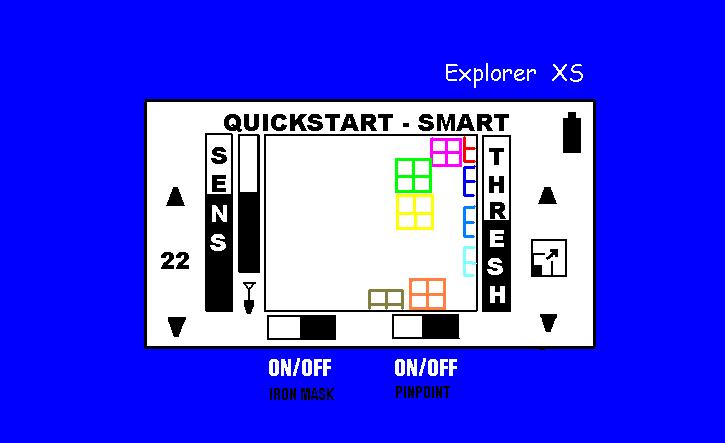
The last screen illustrates
what happens to the crosshairs on deep, faint targets... notice how the
red crosshair jumps back and forth in the indicated area - note especially
how it overlaps the top and right sides of the screen on nearly every hit....
this is a good indicator of a deep silver coin, maybe Seated!!! The blue
crosshair is typical of copper coins, it jumps back and forth side to side
and slightly diagonal within the upper right side of the screen. Finally,
the green hit shows how iron tends to hit, it may hit in extreme upper
left, then the middle upper portion, then to the extreme right center.
These are the 3 most favorite places for the crosshairs to hit on deep
iffy iron targets... many times most of the hits will be in the extreme
upper left, or on the really tough ones, it will bounce from the extreme
right center to the upper middle back and forth.... 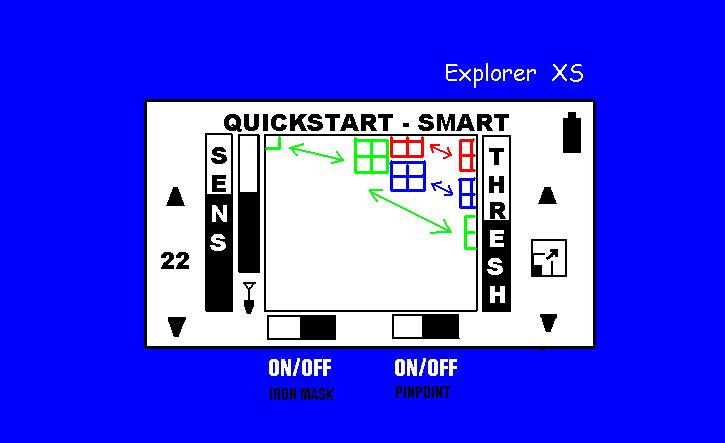
I hope this helps you newbies and not-so-newbies out there get better acquainted with your Explorer at a faster rate. This info is what I learned so far and has proven pretty successful for me. I'm sure I'll find out more as I go along... If anyone out there has addition input to this, please share it with us, I'd be happy to hear about the rest of your findings. Well I'm typed out..... HH and Keep Explorin', Mike.